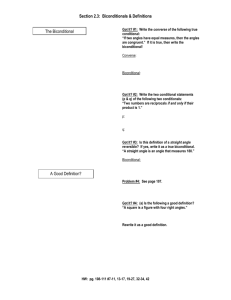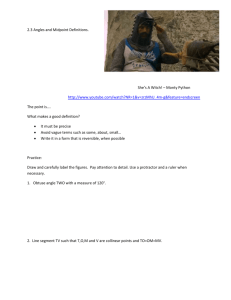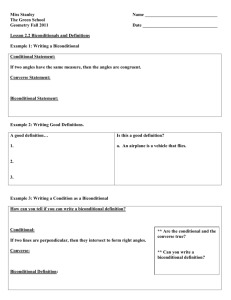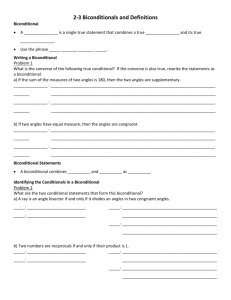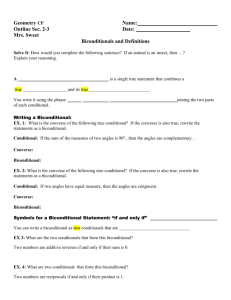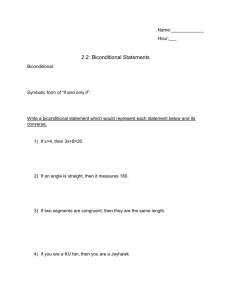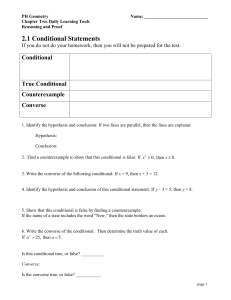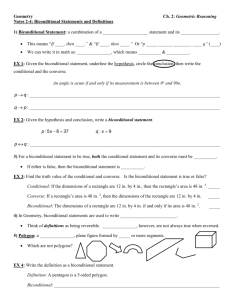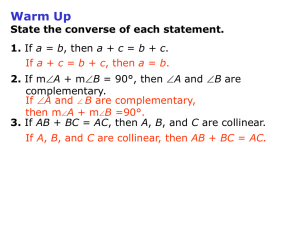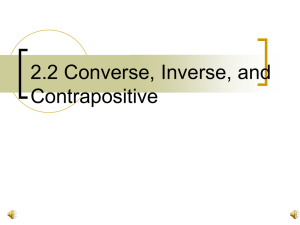Biconditional Statement
advertisement
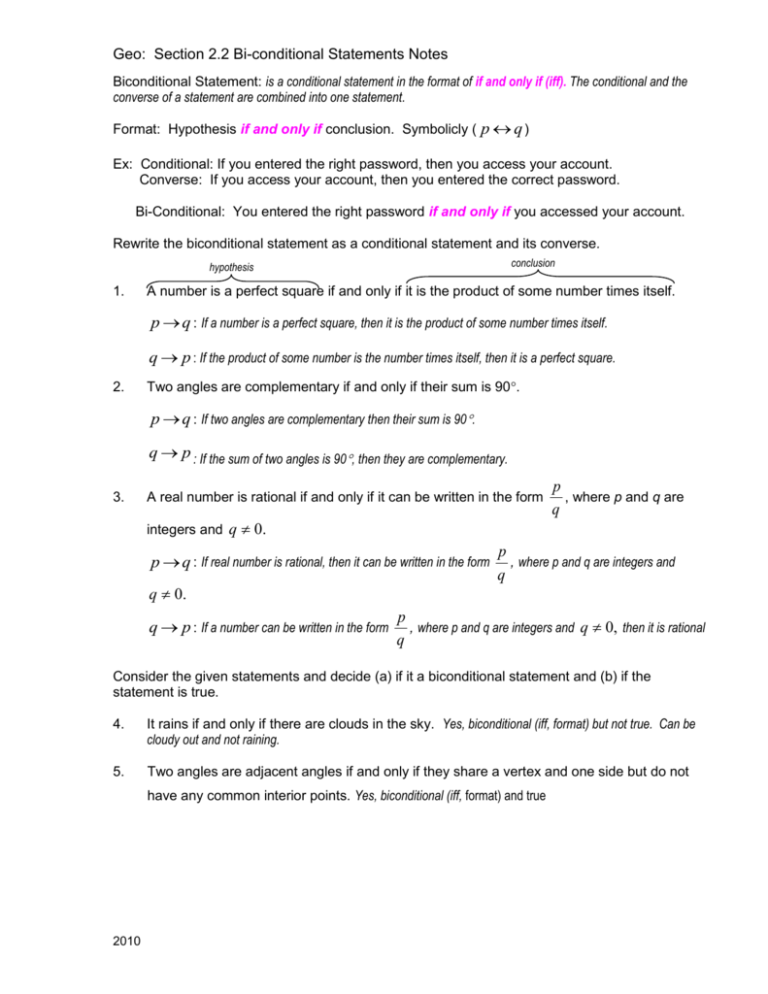
Geo: Section 2.2 Bi-conditional Statements Notes Biconditional Statement: is a conditional statement in the format of if and only if (iff). The conditional and the converse of a statement are combined into one statement. Format: Hypothesis if and only if conclusion. Symbolicly ( p q ) Ex: Conditional: If you entered the right password, then you access your account. Converse: If you access your account, then you entered the correct password. Bi-Conditional: You entered the right password if and only if you accessed your account. Rewrite the biconditional statement as a conditional statement and its converse. conclusion hypothesis 1. A number is a perfect square if and only if it is the product of some number times itself. p q : If a number is a perfect square, then it is the product of some number times itself. q p : If the product of some number is the number times itself, then it is a perfect square. 2. Two angles are complementary if and only if their sum is 90. p q : If two angles are complementary then their sum is 90. q p : If the sum of two angles is 90, then they are complementary. 3. A real number is rational if and only if it can be written in the form integers and q 0. p q : If real number is rational, then it can be written in the form q 0. q p : If a number can be written in the form p , where p and q are q p , where p and q are integers and q p , where p and q are integers and q 0, then it is rational q Consider the given statements and decide (a) if it a biconditional statement and (b) if the statement is true. 4. It rains if and only if there are clouds in the sky. Yes, biconditional (iff, format) but not true. Can be cloudy out and not raining. 5. Two angles are adjacent angles if and only if they share a vertex and one side but do not have any common interior points. Yes, biconditional (iff, format) and true 2010 Geo: Section 2.2 Bi-conditional Statements Notes Each of the following statements is true. Write the converse of the statement and decide whether the converse is true or false. If the converse is true, combine it with the original statement to form a true biconditional statement. If it is false, state a counterexample. 6. If the sides of two angles form two pairs of opposite rays, then the angles are vertical angles. Converse: If angles are vertical, then the sides of the two angles form 2 pairs of opposite rays. (true statement) Biconditional: The sides of two angles form two pairs of opposite rays if and only if they are vertical angles. 7. If the product ab is 0, then either a must be 0 or b must be zero. Converse: If either a is 0 or b is zero, then the product ab is zero. (true statement) Biconditional: The product ab is zero if and only if a or b is zero.. 2010
